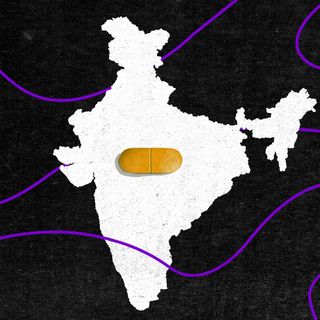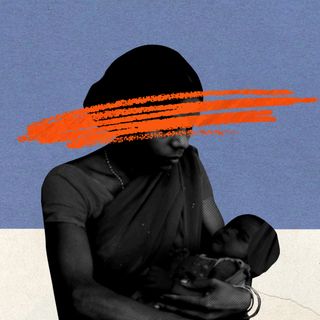
Trans People’s Mortality Risk Twice That of Cis People: Lancet Study
Over 50 years, barriers to healthcare and social support have kept high mortality risks in transpersons relatively unchanged.

A Netherlands-based study spanning 50 years — from 1972 to 2018 — found that transgender persons faced twice the mortality risks of cis people. Throughout the 50 years, there had been no decrease in the trend, the study found.
The research, published last week in The Lancet Diabetes and Endocrinology, studied mortality trends among a cohort of around 4,568 trans people in The Netherlands who visited the gender identity clinic of the Amsterdam University Medical Centre, and who were undergoing gender-affirming hormone therapy. There were no mortality risks associated with the hormone therapy; instead, factors like cardiovascular disease, suicide, lung cancer, and HIV influenced differing mortality outcomes among trans and cis people.
While previous studies had established the difference in mortality rate, what was unknown was how the trend changed over time. Data from the trans people was compared with that of cis people obtained from the Statistics Netherlands (CBS).
A breakdown of observations by gender and cause of mortality revealed some concerning trends. Trans women had nearly double the mortality risk of cis men and triple that of cis women. In terms of cardiovascular disease, infection, lung cancer, and non-natural causes of death, trans women faced mortality risks that were several times those of cis men and cis women. The highest difference in mortality was in HIV: the mortality rate was 15 times higher for trans women than cis men, and 50 times than cis women. For trans men, the mortality rate was similar to that of cis men, but twice that of cis women.
It is worth noting, however, that mortality due to HIV and suicide were higher during the first few decades of the study than later, suggesting that improved societal acceptance and healthcare had a positive impact on trans people’s health.
“Increased publication of data on the safety of gender-affirming hormone therapy in the transgender population, which is lifesaving for many people, is encouraging. Continued refinement of delivery of care for transgender people will help to improve the lives of a clinically vulnerable growing population,” Vin Tangpricha of Emory University, USA, who was not involved in the study, wrote in a comment.
The authors of the study stated that its limitations included the fact that a wider range of mortality causes could not be ruled out from the data, and that most of the cohort studied were white. However, the study raises important questions about trans-inclusive healthcare across the world and the dangers of exclusionary medical practices for trans people.
Related on The Swaddle:
That the study showed such damning statistics in The Netherlands, whose healthcare system is relatively more inclusive and accessible, is cause for concern for other regions and contexts. Discrimination wasn’t a specific factor included in the study, but there is cause to believe that it amplifies the mortality risks that trans people face in contexts where it is widely prevalent.
In India, several reports have shown that rampant discrimination, abuse, and neglect in the healthcare system prevent trans people from seeking medical help. In one instance, a trans woman who was gang-raped was denied examination and access to HIV medication; in another, a trans man succumbed to injuries from a train accident because the hospital staff couldn’t determine whether to admit him to the male or female ward. As a result, trans people in India remain more vulnerable to other mortality causes, especially during the pandemic. Recent data showed that as of May 2021, less than 5% of India’s transgender population received the Covid19 vaccine.
Just last month, a trans woman from Kerala who was a popular RJ and aspiring political representative, died by suicide due to medical neglect after a botched gender-affirming surgery.
Moreover, trans healthcare in India is viewed through a very myopic lens. “The approach to the rights of queer-trans people through a singular focus on HIV/AIDS intervention and prevention… limited the kind of claims that queer-trans individuals can make from the public-health system — anti-retroviral therapy (ART) and, more recently, hormone replacement therapy (HRT) and sex-reassignment surgeries (SRS). Beyond this, there has been very little conversation regarding the health of people living with a compromised immune system, queer/trans-friendly mental healthcare, queer/trans-friendly staff, and caretakers,” wrote Sayantan Datta for The Swaddle.
Rohitha Naraharisetty is a Senior Associate Editor at The Swaddle. She writes about the intersection of gender, caste, social movements, and pop culture. She can be found on Instagram at @rohitha_97 or on Twitter at @romimacaronii.
Related


How Social and Medical Biases Keep Low‑Income Indian Women From Getting Postpartum Mental Health Care
